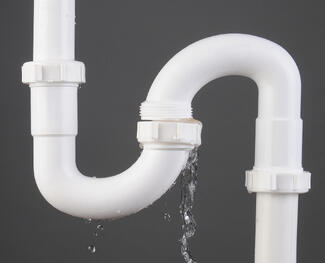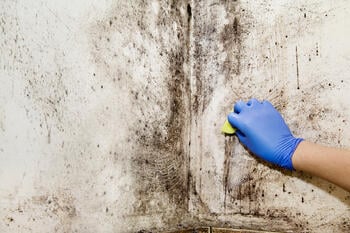For building inspectors, contractors and restoration specialists, keeping buildings in tip-top shape is of the utmost importance. For contractors that come in to fix issues such as mold and water leaks, their main mission is to repair the problem and make the habitat suitable for the tenants as quickly as possible. Building inspectors and restoration specialists have the duty to ensure homes and workplaces are structurally sound before any person moves in again.
And while this responsibility holds a lot of weight, fortunately, these professionals can use moisture meters to optimize restoration efforts and assist them in their projects. In this post, we’ll highlight how these moisture meters make sure sound structures are maintained and restored to their proper levels when used correctly.
Leaks
 One of the more common uses for moisture meters are leaks, of course. The benefit of having a meter allows the user to have a more accurate second opinion rather than a naked-eye test.
One of the more common uses for moisture meters are leaks, of course. The benefit of having a meter allows the user to have a more accurate second opinion rather than a naked-eye test.
Often times, the origin of a leak can be several feet away from where the resident notices it. Patching up leaks and the trail that it may create within your piping is also important to prevent critters from entering the property.
Drywall
Drywall offers home builders and residents with convenient benefits such as an attractive appearance, energy efficiency, fire resistance and low-cost upkeep. The downfall of the material is that it’s extremely sensitive to moisture. For the prevention of mold and for the safety of the those within the residence, building inspectors use moisture meters to get accurate moisture readings of drywall.
A 1% moisture content is enough to compromise the structure, thus, forcing professionals to truly relish moisture meters. Plus, there are moisture meters on the market that are made specifically to cater to certain materials. For instance, meters with a drywall scale help take quantitative readings to ensure that building inspectors can be confident in their work. Not to mention, the use of these meters save ample amounts of time that can be applied to other areas of the home.
Mold
 Anyone who has experienced mold in their home can attest that it can become a costly problem if not addressed quickly. Moisture meters work best when they’re used early to detect the potential threat of mold growth.
Anyone who has experienced mold in their home can attest that it can become a costly problem if not addressed quickly. Moisture meters work best when they’re used early to detect the potential threat of mold growth.
Whether someone is renting out a new place or a building has been unoccupied for a while, professionals make use of moisture meters to search for pockets of moisture that can grow into bigger problems like mold or leaks.
Using either pin-type meters or pin-less meters, detecting moisture under tile, wood floors and carpets is crucial to keeping the physical integrity of the location in solid, safe shape. Mold spores develop in wood starting at 20% moisture content, which is higher than drywall. Whatever the material in the property, there are moisture meters available to assist professionals make accurate readings.
Pests
A damp environment can serve as as breeding ground for some pests. To help homeowners or businesses reduce the risk of having an infestation, moisture meters can identify pockets of wetness that can become a threat to the safety and comfort of employees or tenants.
Some of the most common areas that can breed these pests include cracked pipes, faulty drain installations, damp basements, bad insulation, poor wood quality and unsealed windows. The pin-less moisture meters that allow home inspectors to broadly scan areas using radio frequencies are more likely to be used to identify moisture in these areas.
Fortunately, moisture meters serve as a solution that benefits both sides. Their practicality, accuracy and speed allow professionals to conduct their job duties with ease and confidence while giving their clients greater peace of mind in the process. For more information on which meter is best for your next project, contact one of our specialists today!

Comments